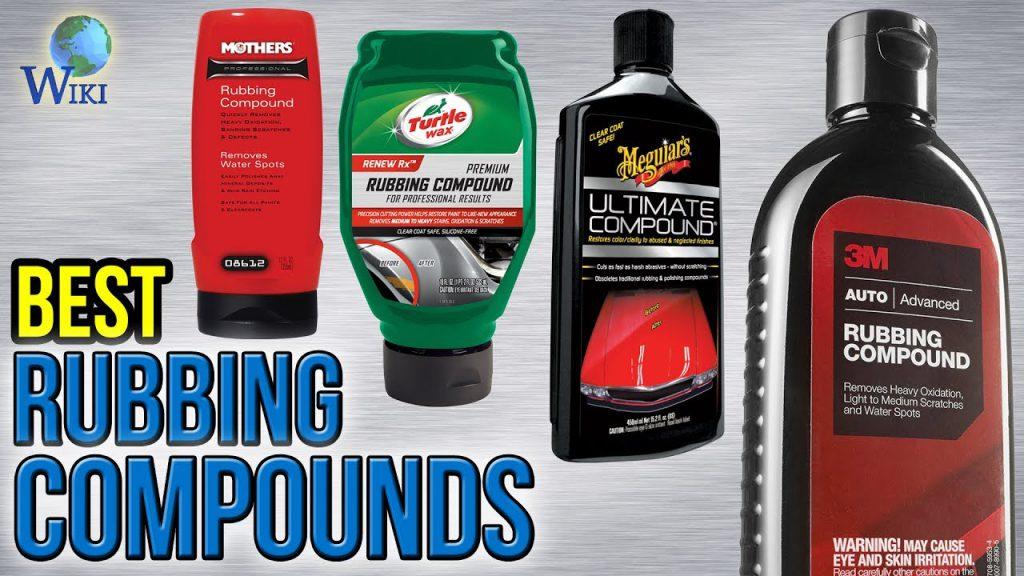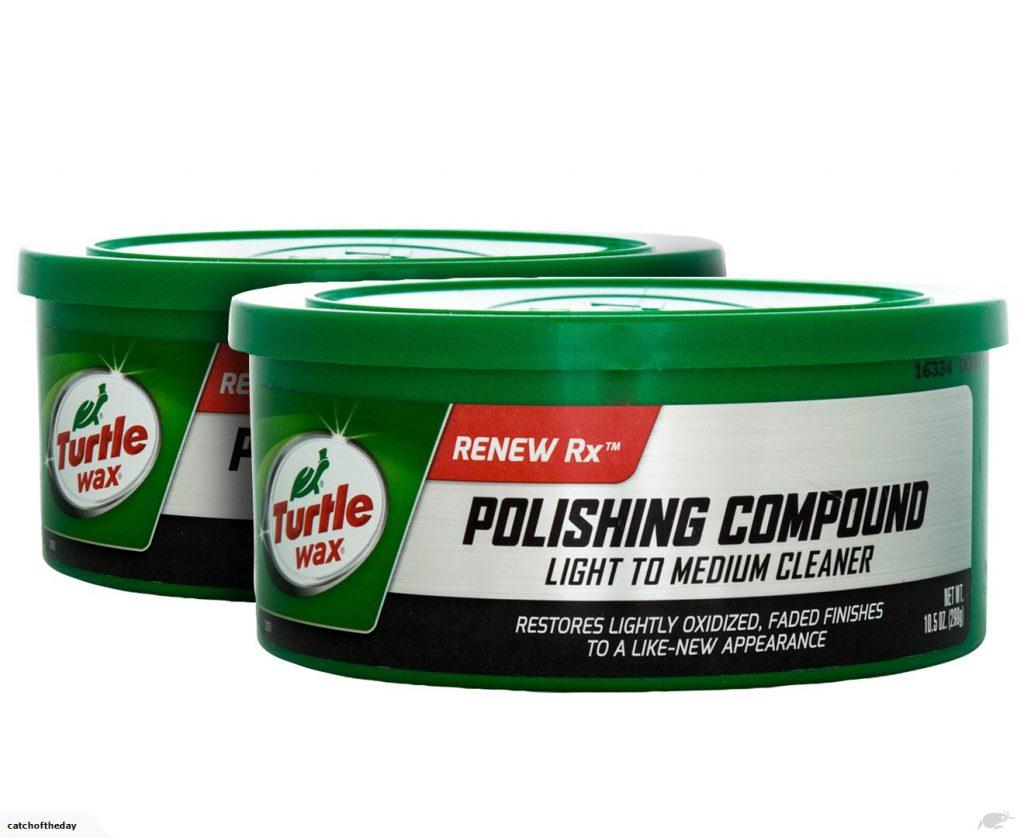Rubbing compound vs polishing compound, have you made your choice? If you own a car and like to maintain it in excellent condition, this would be the most concerning question.
Without a doubt, both polishing and rubbing compounds target different car issues but somehow they are often interlinked.
As a surprise, most car owners think there is no difference between rubbing compound vs polish. If you too also relate rubbing compound vs polishing compound, then this information would surely be beneficial for you.
Contents
Difference Between Rubbing Compound Vs Polishing Compound
Do you know you should always prefer using a polishing compound post the rubbing compound? This will make your car look more stunning and shining.
Didn’t know this? Just like this, here are some of the other essential facts about the difference between the rubbing compound vs polishing compound.
Rubbing compounds targets uneven car surfaces caused by scratches while on the other hand; polishing is preferably used for adding smoothness and shine to the car paint. Both will help in improving your car’s quality but in different ways.
Let us get a clear picture with some detailed information about polishing compound vs rubbing compound.
What Are Rubbing Compounds?
Talking about specifically the rubbing compounds from polishing compound vs rubbing compound, these compounds are used to level the uneven surfaces on the car’s paint.
It is also called a ‘leveling compound’ as it levels the uneven surface caused due to the stretches. It could also be referred to as the beginning level of handling and taking care of the car’s paint, which can be followed by polishing compound and waxing.

The rubbing compound will shave down the paint and will level it by smoothing the sharp and rough edges of the stretch. As the rubbing compounds are quite aggressive, they can be found in varying degrees.
You can choose the rubbing compound from 1000 to 5000 grit, according to your car’s needs and requirements. The different grits of the rubbing compound handle the different depths of the paint stretches.
Thus, if you want to level down the side effects of the stretches on the car’s paint, you can choose the rubbing compounds from the polishing compound vs rubbing compound.
The deeper the problem, the higher the grit value of the rubbing compound.
Benefits of rubbing compounds:
- Easy to use
- Quickly fixes the unevenness from the scratches
- Requires minimal cleaning work
- Restores old paintwork
- Vanishes or conceals the car’s scratches
- It is an abrasive material and thus can be found in variant grits
- Breathes new life into the old paintwork of the car
Disadvantages of rubbing compound:
- Requires the use of the proper technique for better results
What Is a Polishing Compound?
The polishing compounds are mildly abrasive and are generally used for smoothing the paint. The polishing compounds can leave a shining and smoothing effect on the paint along with removing light scratches from the paint.
However, polishing will not remove any paint scratches or defects but it will surely remove the dullness from the paint.

SEE MORE:
In simple words, polishing compounds do what rubbing compounds do but certainly at a finer level. The polishing compound out of rubbing compound vs polish helps in making the paint color pop out and shine.
Thus, the polishing compounds are used after the use of the rubbing compound on the paint. Other than this, the polishing compound cannot alone protect the paint for a long time.
Also, they are limited in providing a long-lasting shining effect on the car’s paint. You may have to use paint protectant for making your car’s paint stay shinier for a long time.
Benefits of polishing compounds:
- Provides a natural appearance to the car’s paint
- Delivers the needed shine and gloss to the paint
- Provides durable finishing
- Do not require stripping
- Can be applied using a low-speed machine
- Not a daily affair. Used periodically
Disadvantages of polishing compounds:
- Requires additional cleaning work
- Can only be done by using the required types of equipment
It is often confusing to choose between rubbing compound vs polishing compound, thus the following benefits and disadvantages of both processes will help in getting a clear picture.
Watch the video from AMMO NYC to see when to polish vs compound vs wetsand:
FAQs On Rubbing Compound Vs Polishing Compound
-
Is it okay to use a rubbing compound on ceramic coating?
Because of its restorative characteristics, polishing your ceramic coating will simply tear away this protective layer, leaving nothing but the visible clear coat.
While this is fantastic for removing old coats of wax, it actually shortens the life of your paint sealant rather than extending it.
-
Is vehicle wax and rubbing compound the same thing?
The primary distinction between compound and wax is that the former is applied prior to waxing the vehicle. Because the compound is used to smooth the surface of the paint, the wax is added to preserve it and improve its look.
-
Is rubbing compound better than scratch remover?
By removing a tiny layer of the clear coat, both compounds may repair scratches. The abrasives make the difference.
When compared to cutting compounds, rubbing compounds have finer abrasives or “grit.” Cutting compounds include coarser and harsher abrasives, thus the name.
-
Is it necessary to apply a rubbing compound after touch-up paint?
To make it shiny, you can apply a rubbing compound after touch-up paint. Wait at least three days before applying rubbing compound (cutting creme) to the whole repaired area of automobile paint. This will smooth and shine it.
-
Can rubbing compound erase scratches?
The majority of minor scratches may be removed by polishing the clear coat using a rubbing substance. It will remove the damaged layer and restore your paint to its original condition.
If the damage is really deep, you may need to sand it before polishing it. It will smooth off any rough edges and make evenly applying the compound simpler.

-
Is toothpaste useful as a rubbing compound?
Because toothpaste is a mild abrasive, it can help remove tiny scratches and scuff marks from the paint job of your automobile. Simply wipe a pea-sized quantity of toothpaste into the scratch or scuff mark with a soft, clean cloth.
-
Can you use baking soda as a rubbing compound?
Baking soda is another common home ingredient that may be used to repair automobile damage. Use a soft cloth to apply a paste of 50% baking soda and 50% water on the scratch.
Rub the paste into the scratch in a circular motion. Then, using a clean, wet towel, remove it.
-
When do I need to apply a rubbing compound?
It is recommended for use on severe stains, oxidation, paint transfer and restoration, scuffs, unevenness, and deep scratches. For the best-looking results, you’ll need to utilize proper technique.
Polishing compounds, on the other hand, promise rapid repairs, minimum clean-up, excellent camouflage, and rejuvenated paint jobs after you’ve mastered them.
Conclusion
So, the next time you are in any dilemma about using rubbing compound vs polish, make sure that you are aware of all the related information. Both processes are necessary in their place and should be used without any confusion.
The results from the rubbing compounds can be backed by the polishing compound for getting a smooth and shinier finishing.
Comment below any of your concerns and our experts will get back to you with the best possible details about rubbing compound vs polishing compound. Which one will you prefer? Also, keep following us to get more car maintenance tips updated every day.




This makes sense, today I got scratches from my Dog. I drive a Black Suzuki Escudo and I bout Turtle Rubbing Compound. I applied it and removed it after 2 minutes, scratches disappeared. So after that I had to restore the shine with car polish. So these two work hand in hand. After using rubbing compound, apply polish.
Just used this method on my 23 year old boat which was heavily oxidized with terrible color fade. Rubbing compound took out the scratches and brought the color back and the polishing compound shined it up beautifully. I think it’s also important to note that these compounds will absolutely strip off any wax that might be there. So it is critical, IMHO, to put a good coat or two of wax on the finish to protect it.
Thanks for the blog